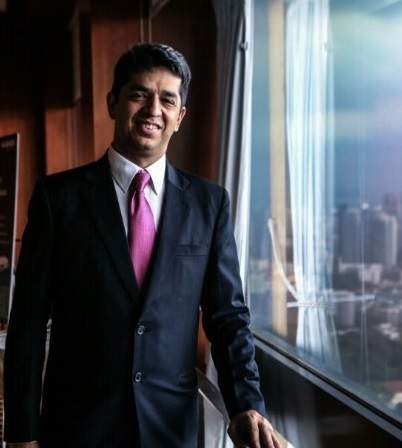
ATxSG 2022, 01: Covid effects result in lower participation, media gets the axe
It was where it began, for me. The location this year was neither the top-of-the-line Marina Bay Sands Exhibition Centre nor the centrally located Suntec City. AsiaTechxSingapore (ATxSG), the new avatar of CommunicAsia, moved back to Singapore Expo, where I had first visited it, some 25 years ago. Though a standard exhibition and conference venue, it just cannot compare with Marina Bay Sands. As an add-on, rooms in the Atria adjunct were booked by a few brands, as their hospitality and one-on-one interview sessions venue. Expo is near the East Coast of Singapore, near Changi Airport, close to the end of the Mass Rapid Transit (MRT) train line of that sector. There is a station named Expo, and once you get off there, you can walk to the venue. It is a long walk, but then so is it in every MRT station, especially when you are changing lines. You could end up walking close to one km within the station before you reach your platform.
Reaching well before the scheduled opening time of 9 am, I was stopped from getting my card by security personnel, who insisted that I scan a QR displayed on a poster. It was not mentioned why was this required and what was it about. But it as mandatory. So, I scanned the QR code. That merely led me to a website. I asked the man what was I to do with the website. He said that I should open the website and fill in a form, submit it and show the receipt to him. The form was mainly about Covid, and I had a certificate with me, endorsing my triple vaccination. The certificate cut no ice with him, and he allowed me to proceed only after I did as told.
Form submitted, I headed for the room where the media badges were being distributed. I got mine soon, a folded sheet of paper, same identification on either side, which was to be inserted in the plastic cover and attached to a lanyard, which had a piece of lace attached to it, and it had to be hung around my neck. So, I was ready. But before I made it to the opening session, I was desperate to reach the media room, where I could get access to my pen-drive, and have a quick cup of tea. For two days, I had tried to find some place or somebody who had a USB slot that they could let me use. I was not carrying any laptop, and it was not required, for the media-room always had a number of PCs freely available for use by the media. To my horror, nobody had a USB slot. Those that did, had it on official computers and were not allowed to make any personal use of it. Internet Cafes are all but extinct in Singapore. I even went to the Public Library, which allowed free use of PCs, but none of them had USB slots. Desperate, I had called Patricia Yee, who has been my contact person at this event for around a decade, a day before. She could not help either.
It was necessary that I access that vital bit of information on my pen-drive, and it would take less than five minutes to do so. So, I looked around for the Media Centre. What I saw was shocking. A couple of chairs and tables, a few papers scattered on them and… that’s all. This was the Media Centre, at an event that attracts 10,000 visitors. There were no PCs or laptops, no facilities for tea, coffee, snacks and lunch, as had been the practice for decades. I met Khalifah Hafiz of Lewis PR, who was on the ATxSG account and had been in touch with me on email before the event, and he confirmed that this was all that they had arranged for the media this year. On my pen-drive, he could not help me get a single laptop or PC to view it at what could be Asia’s biggest Communication event, with at least 5,000 laptops around. I sent an email to Patricia, expressing my shock, but she seemed completely nonchalant.
A brand called Wokato emerged as the good Samaritan, serving tea and coffee to the visitors. Tea consumed, I took a round of the three halls that had been occupied by the exhibition. What about the free-flowing beer, snacks, cakes and ice-cream? Banish the thought. Turnout was significantly thinner than in previous years, and even the stalls/booths were fewer. Desperate to hook a buyer, many stall personnel latched on to me and started singing praise of their hardware or software. When told that I was a journalist and not a buyer, I was met with four types of reactions. Some got impressed and passed me some gifts. Some others insisted that I write an entire article about their company and products, but did not let go any gift. Still others turned the cold shoulder, wondering what is a ‘journalist’, or, even if they knew, what was he doing there? The fourth reaction was the most interesting. They said, “Okay. So you are a journalist. But surely even publishers need software and hardware solutions, so how about taking a look at our line and buying something.” Unfortunately for them, I am India Correspondent for the Paris-based filmfestivals.com, and have no say in the running of the website.
Sans breakfast, an early lunch was the best idea. There is a food court outside the complex, with 7-8 different stalls/restaurants. I headed that way. What greeted me were serpentine queues at every outlet. There could be up to 50 people waiting for their turn to order. Yes, there was a restaurant within the exhibition complex, but either it lacked variety or the prices were sky-high. Out here, the prices were high, but still affordable. With no choice, I joined the line outside the Indian food stall. My turn came after an hour, and then the lady at the stall announced, with no compassion whatsoever, that food had run out. What was the option now? Join another queue, wait another hour, and then,…! I decided to get away. Surely there must be a McDonald’s or a KFC in the vicinity. Across the road, I found one McDonald’s, and after a short wait, I got my order. Not as fulfilling as a regular Indian meal, but enough to keep me going.
Back to the venue. Almost every other stall had a vertical roulette wheel installed. Whosoever wanted a gift, which could be just a pen or something much more valuable, had to first scan their QR Code, fill in the form, with all their personal details, and then get a chance to spin the wheel. Obviously, this was their way of creating a database. But it also meant that freebies were a rarity this time round. The generosity seen at earlier editions was noticeably missing. Initially, the security staff demanded that you show your scan result every time you moved from one hall to another. This was dispensed with later, and all the three halls were inter-connected. You could walk from Hall 3 to 4 to 5 seamlessly, without even noticing that you had changed halls.
ATxSG consisted of ATxSummit (organised by IMDA: By invitation only), ATxAI (organised by IMDA), ATxAI (organised by IMDA), ATxEnterprise Headliners, ATxEnterprise Headliners, ATxInspire – SG Women in Tech (organised by IMDA), ATxInspire – SG Women in Tech (organised by IMDA), BroadcastAsia, CommunicAsia, SatelliteAsia &Asia Satellite Business Week, TechXLR8 Asia, InnovFest x Elevating Founders and ‘hacksingapore’. The whole event was organised jointly by Informa Tech and The Infocomm Media Development Authority of Singapore. Informa Tech is a British company, so no wonder there quite a few officials who spoke with the Queen’s English accent. Informa claim on their website that every year, they welcome 14.000 subscribers to their research, nearly 4 million unique visitors a month to their digital communities, over 18,200 students to their training programs and 225,000 delegates to their events.
Though I usually attend the event on all three days, this time, I decided to cut down my visits by half, and went there only on the first day (when I lost two hours trying to get lunch) and for half-a-day on the second day. There were no statistics and information available about ATxSG either on the ATxSG website or on the Informa Tech website, even ten days after the event had concluded. Neither were there any media releases about the event.
One event that I always attend annually is the Hughes breakfast on the 2nd of June. It used to be on the 70th storey of the Swissotel Stamford, giving you a breathtaking view of the city, quite apt for a satellite operations company. This year, cost-cutting did not spare this giant of an operator too. They moved to a hotel called Andaz (that name is a rarity in Singapore), a Hyatt property at Fraser Street, in the Bugis MRT complex. Breakfast was scheduled for 7 am, and I could make it only by 7.30, which was good enough, because the proceedings began a little later. As against a lavish buffet, we were handed cardboard boxes. The boxes had four items, three of which I could not eat, so I settled for some fruit, a croissant and a cup of tea. When asked for grapes, they said they had run out of grapes.

Vaibhav Magow of Hughes took the stage and pretty much took control of all formal proceedings. This year, there was nobody from their principal office in the USA present at the occasion. Magow is the Vice President, International Division, leading Hughes broadband systems sales effort in the Asia Pacific, Middle East/Africa, Europe and Russia/CIS regions. Several speakers had their say. Hughes Communications India Private Limited is a market leader with an installed base of 125,000+ sites and Fortune 100 customers and government.
Hughes Communications India, (HCI), a majority-owned subsidiary of Hughes Network Systems, LLC (HUGHES), an innovator in satellite and multi-transport technologies and networks for 50 years, and Bharti Airtel Limited (“Airtel”), India’s premier communications solution provider, announced last January the formation of a joint venture to provide satellite broadband services in India.
Operational as HCI, the entity combines the Very Small Aperture Terminal (VSAT) businesses of both companies to offer flexible and scalable enterprise networking solutions using satellite connectivity for primary transport, back-up and hybrid implementation. The agreement, announced in May 2019, has received all statutory approvals, including those from the National Company Law Tribunal (NCLT) and Department of Telecom (Government of India) and the joint venture has been formed. Now serving Airtel VSAT customers, HCI has a combined base of over 200,000 VSATs.
When this writer asked a senior Magow colleague from HCI whether there is any conflict of interest, since Hughes has been working with Reliance for the last 26 years or so, and now they have Airtel on board, the official replied that neither party had any objection and Hughes was striving to keep both telecom operators happy.
If it had to be an event where journalists were to denied everything that they were provided in all previous editions, the journalists themselves would have no say in the matter. But it would be courteous and considerate to inform them in advance that this was going to be the case. Then, it would be up to them to take a call, and attend, or stay away. In the present scenario, they were trapped. Not all journalists have their publishers paying for their expenses related to the trip, which could amount to SGD2,000-3,000. I go on my own, and am happy to enjoy the privileges that come my way, after being a journalist for 52 years. On the other hand, I might reconsider making it to future ATxSGs, if media are treated like they were in 2022.














